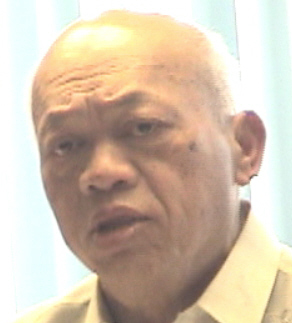|
Where
were the men and women of Pugad Lawin the night before Rizal was
executed?

by
Sir Jose Sison Luzadas, KGOR
Scarborough
Chapter
The
discovery of the Katipunan with many members arrested forced Supremo
Andres Bonifacio to gather them in Pugad Lawin, one hot and humid
August evening. Then they started tearing cedulas, brandishing
knives, bolos and sharpen tools and were heard shouting, "Mabuhay
si Dr. Rizal! Mabuhay Ang Filipinas! Mabuhay ang ating Bagong Bayan!"
Those
deafening shouts of protest finally reached the ears of the enemy
who were secluded comfortably in the sacristy of the church, in the
halls of Ayuntamiento and in the barracks of the Civil Guards
while the native population of Manila and neighboring towns were
poised for the worst but nevertheless, have not given up hoping and
praying for their eventual deliverance from a decaying empire.
Has
anyone seen the medico-heneral who on orders from Bonifacio,
by taking a handful of men in a cloak and dagger fashion undertook a
mission aimed at smuggling Dr. Rizal out of Dapitan so that a
revolution can begin? Where were you Dr. Pio Valenzuela?
Did
anyone see the Kartilya editor, who was also the Brain of the
Katipunan who at one time disguised himself “sailor” so he can
go aboard a Cuba-bound army ship? Poor Emilio Jacinto, last seen
leaving the same ship terribly disappointed of his failed rescue
attempt.
Why
did Rizal refuse all these missed opportunities to be free? Can he
not read the writings on the wall? Or was he digging his own grave
for martyrdom? Breathes there the man wanting to master his fate and
be the captain of his soul.
Why
did the Katipuneros abandon Rizal on the day of his
execution? Is it more important to heal the Magdalo-Magdiwang
feud rather than to save the life of their most symbolic icon?
How
many times did Rizal deny his involvement and role before the
military court that convicted him of crimes of sedition and inciting
the people to revolution? Why did he condemn the revolution as
absurd idea? Was blaming the Katipunan for all the disturbances a
wise move to save his neck? Is this not an affront to the noble aims
of the noble sons of the Katipunan?
Diplomat
Leon Ma Guerrero postulates, GUILTY OR NOT let’s judge Rizal in
either way, if guilty, why was he a hero? If not, why was he a
martyr? I can see his enemies laughing all the way to the gallows
for his denials did not save his skin. The same vintage Guerrero,
author of “The First Filipino” argued that the Spaniards are not
stupid. Rizal can condemn Bonifacio and his revolution but did not
condemn Bonifacio’s aim for independence of his country inspired
and encouraged by Rizal’s writings and self-sacrifices. His
enemies wanted nothing but his death. All they cared about and
craved for was a bittersweet revenge since his NOLI and FILI
made them subject of mockery and ridicule, a chronicled textbook
references of 400 years of injustice, oppression and tyranny of
Spain's ugly colonialism.
Beguiled
and bewildered as to why no one showed up on the evening and
midnight of December 29th 1896, the man whose name they used as
rallying war cry was busy writing a farewell letter to his
motherland. Nothing unusual happened to disturb the tranquility of
the night, there was complete silence and if ever there was a crack
heard, it was the “crack” of dawn.
O
Clio, Muse of History, tell me why nobody came to rescue Rizal?
Where were those men and women who were at Pugad Lawin?
Copyright
2007 Knights of Rizal Scarborough, Ontario, Canada
editor
and webmaster: junzerrudo@hotmail.com
|

